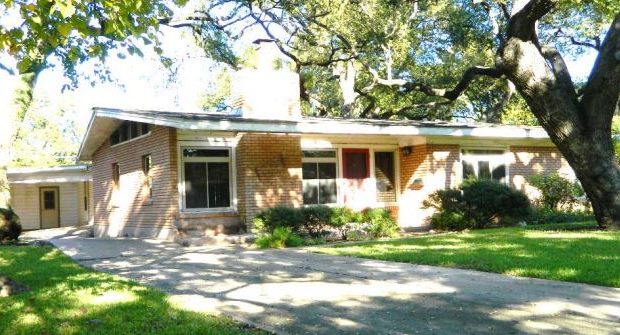Pending demolition highlights need for preservation education
Tuesday, February 14, 2017 by
Elizabeth Pagano After about three months of discussion, a midcentury modern Rosedale home is officially destined for demolition.
When the Historic Landmark Commission last took up the proposed demolition, it proved to be a flashpoint for ongoing intra-commission tension. This time around, commissioners agreed that it was time to move forward with the demolition of 2506 Great Oaks Parkway.
Commissioners voted 7-2 to release the demolition permit after a discussion with the applicant about how Austin could best demystify the historic landmark process. Chair Mary Jo Galindo and Commissioner Emily Reed voted in opposition and Commissioners Terri Myers and Michelle Trevino absent.
Commissioner Beth Valenzuela said that while she could see the merits of the building and architect, she couldn’t justify an individual landmark status for the home, though it would be a contributing structure if it were in a local historic district.
Owner Jim Brown told the commissioners that he and his wife, Victoria Brown, had never intended to demolish the house, but “years of neglect and poor workmanship” had taken their toll. “Everything in this house needs either repair or replacement,” he said. “To bring it up to current building codes and energy codes, it’s almost impossible.”
Brown explained that vinyl siding had obscured many of the home’s structural problems and that the couple would have reconsidered even buying the home if the siding had not been there.
The (unrelated) Realtor who sold the home, Damon Brown, told the commission that he has been a real estate agent for the past 15 years but he “hadn’t found a Realtor yet that knows of this process.” He also pushed for more information for buyers contemplating purchasing a home that could be considered historic.
“There’s a lot of bad – or lack of – information on the real estate side of things,” said Damon Brown. “This scenario presents a lot of confusion and liability. If agents don’t know to tell their clients there is a possibility (that) ‘this house you are considering could be up before the historic commission as a landmark,’ there is a big risk us as agents take on.”
He suggested the creation of a database of homes that could potentially be considered historic, saying it could include things like significant builders as a way for agents and buyers to stay informed. He told the commission that, for example, he had never seen a case in which homes in national register historic districts had been identified as such on MLS listings.
Galindo offered the advice that the Texas Historical Commission’s historic sites atlas could help somewhat, as could the city’s map of historic districts.
Commissioner Alex Papavasiliou said that he thought the recently completed East Austin Historic Resources Survey could serve as an “instrumental” guide to that area. He also advocated going to the city’s website to find the “nooks and crannies” created by the city code.
“You can definitely be caught in a very uncomfortable situation,” said Papavasiliou.
Hardy•Heck•Moore Inc. President Emily Payne, who is an architectural historian and lifelong resident of the neighborhood, once again spoke against the demolition. She said that she wanted to make sure the commission had the right information, such as, for example, that the home was built in 1953, not 1958 as the agenda’s backup stated. She also pointed out that many of the photos showing deterioration of the structure were of a nonhistoric addition to the home “that could definitely be demolished even if it were a landmark.”
Payne said that she shared Damon Brown’s goals of making the historic designation process more predictable. “It’s better for everybody,” she said, and recommended a Realtor training class available in Austin twice yearly as a way to get more informed.
David Webber, of Webber + Studio Architects, spoke in favor of the demolition for the third time. He explained that his clients, owners Jim and Victoria Brown, had purchased the house intending to renovate it and changed their plans once they realized the condition the home was in.
“Our hope is that, since we do agree with the ultimate objectives of this commission, is to see those evaluations being placed on houses before (buyers) go through the trouble of purchasing them and investing in them,” said Webber.
He continued, “I’ve been through this process a number of times over the years, and even I could not have had any foresight that this particular house would have been this questionable.”
Photo provided by the city of Austin.
The Austin Monitor’s work is made possible by donations from the community. Though our reporting covers donors from time to time, we are careful to keep business and editorial efforts separate while maintaining transparency. A complete list of donors is available here, and our code of ethics is explained here.
You're a community leader
And we’re honored you look to us for serious, in-depth news. You know a strong community needs local and dedicated watchdog reporting. We’re here for you and that won’t change. Now will you take the powerful next step and support our nonprofit news organization?



